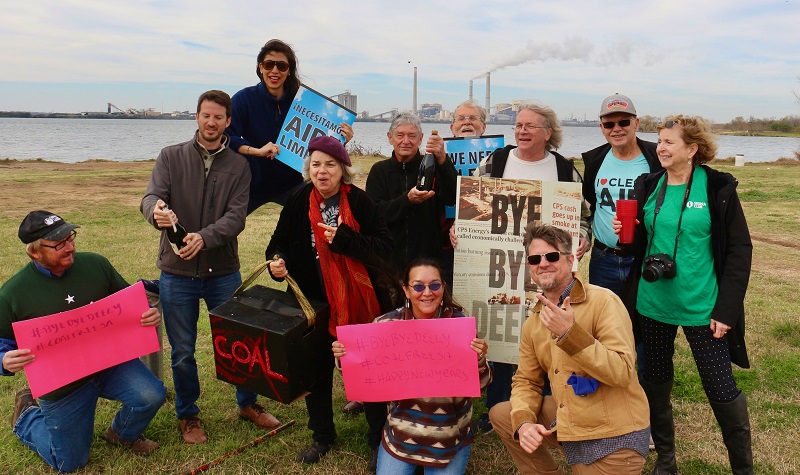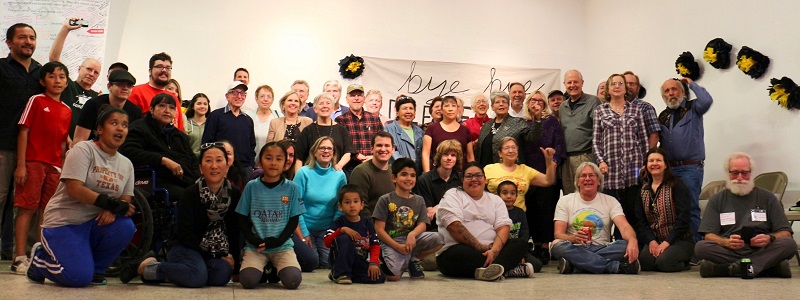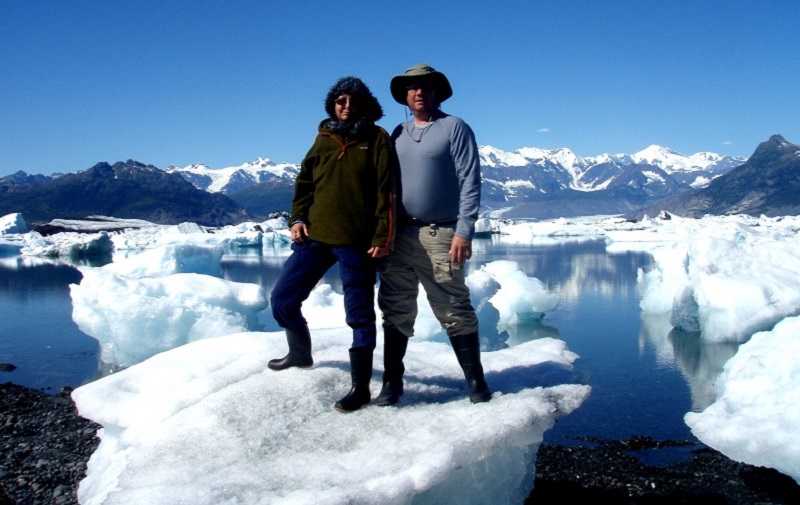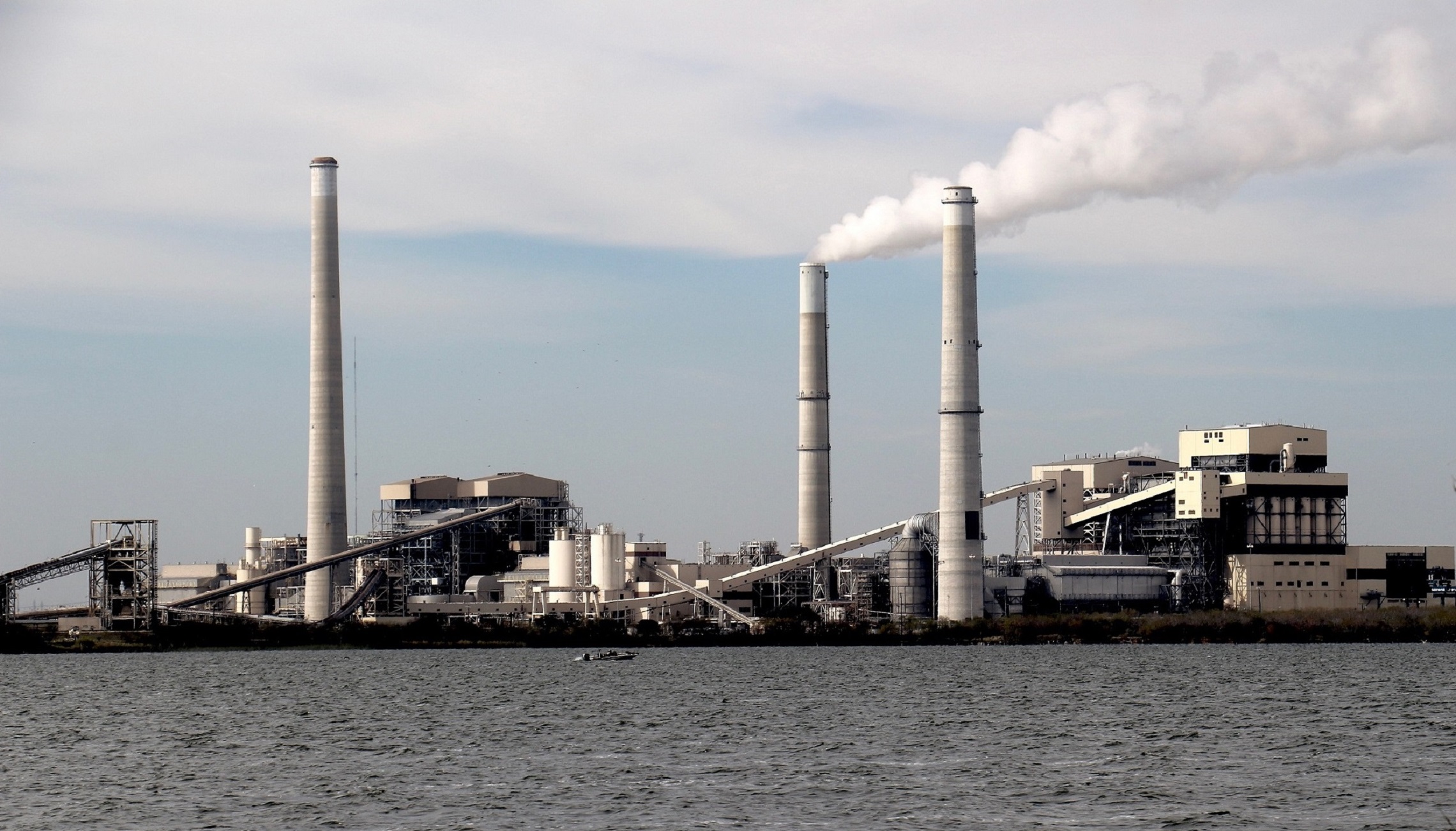New Year’s Eve came a bit early to San Antonio, where environmentalists broke out the bubbly a few hours early to celebrate the retirement of CPS Energy’s J.T. Deely coal-fired power plant. Dubbed “Dirty Deely” by renewable energy proponents, the plant—which dates to 1977—closed 15 years ahead of schedule. Its retirement was the culmination of years of intense community pressure, often led by the historically African American environmental justice community of San Antonio’s east side. A jubilant group, including a city councilwoman who is an environmental health scientist, assembled to ring out the old.

Celebrating the shutdown of "Dirty Deely" on December 31, 2018 — photo courtesy of the Sierra Club
Climate Action San Antonio, a diverse coalition of more than 20 organizations and individuals formed to coordinate climate justice efforts, kept up the pressure on CPS to fulfill its promise on Deely. Sierra Club Clean Energy Organizer Greg Harman is the Lone Star Chapter’s Alamo Group representative in Climate Action SA. “This shutdown happened thanks to sustained community pressure going back many years,” says Harman. In celebration of Deely’s imminent demise, more than 200 activists gathered on December 15 for a festive Shutdown Getdown dance party.

Shutdown Getdown party — photo courtesy of the Sierra Club
Climate Action SA formed in 2017, after President Trump announced his intention to pull the U.S. out of the Paris Agreement. The group credits its advocacy with influencing San Antonio to join hundreds of U.S. cities pledging to meet the agreement’s goals. The city adopted the broad initiative SA Climate Ready, which includes a Climate Action and Adaptation Plan, released in draft form on January 22. Climate Action SA is pushing the city council to adopt a plan that includes three clean energy milestones—no coal by 2025, carbon-free electricity by 2030, and net-zero emissions by 2040.
Challenges and Hope
Much needs to change for the city to achieve these goals. The EPA reports that in the ten years preceding its closing, Deely poured an average of 4.5 million metric tons of greenhouse gases annually into San Antonio’s air, along with health-threatening heavy metals mercury, lead, and barium. So while having Deely taken offline was an indisputable win, activists are focused on the remaining coal-fired plants at the Calaveras station, Spruce 1 and 2. Climate Action SA has a campaign underway to shut them down by 2025, though it’s hoped that Spruce 1 will close sooner owing to its lack of pollution-control equipment.
This is key because, by closing Deely early, CPS chose to avoid retrofitting costs of more than $500 million. In any case, Climate Action SA will push hard on the Spruce plants. “Once it goes out the chute, all of us are exposed and are at risk,” says Harman. “And once it’s out there we can't bring it back, so this is really a life-or-death issue.”
Before closing Deely, CPS pledged never to build another fossil fuel plant in San Antonio. Then, CPS CEO Paula Gold-Williams suggested that Deely might be converted to a natural gas-fired plant. As a result, part of Climate Action SA’s focus has been on making sure the utility lives up to its commitment. Recently Gold-Williams called the gas plant a long shot owing to financials, so Harman is hopeful. “It hit the communities hard when she suggested a gas plant might happen,” he says. “It was like Frankenstein, reanimating something we thought was dead. But we’re pushing them hard for big carbon reductions, in line with current climate science.”
Inspired to Act
Sierra Club volunteers Russell and Karen Seal have played an important role in nudging CPS and San Antonio in the right direction. Russell is a retired pharmacist who was awed at a 1982 trip he and Karen took to several national parks in the western U.S. The Exxon Valdez disaster occurred soon afterwards, but on a return trip in 2006 he was relieved to see signs of recovery. “I was heartbroken that Prince William Sound had been destroyed, but when we returned almost 25 years later it was still spectacular. If we hadn't been told that a third of the native species were gone, we wouldn’t have known,” he says.
But he was taken aback by the damage climate change had done to the Columbia Glacier, which he was informed had retreated 11 miles since his first visit. “Seeing the Columbia Glacier fall apart drove me to get active with the Sierra Club,” he says. “It had been at its 1982 terminus for 4,000 years! Seeing climate change up close, you know that you can't just go back to your previous life.” Karen shared that determination and became a dedicated Sierra Club activist in her own right.

Karen and Russell Seal at the Columbia Glacier's terminal moraine, 2007 – photo courtesy of Russell Seal
Back in Texas, Russell assumed the role of political chair for the Alamo Group, whose support he feels helped Julián Castro get elected mayor of San Antonio in 2009 (Castro recently declared his candidacy for the 2020 presidential election). Seal strongly believes that Castro deserves credit for moving the city forward on sustainability, crediting him with killing a CPS plan to expand its nuclear footprint and establishing a cooperative relationship with new CPS leadership, for example.
Harman describes Seal as a long-time “effective inside negotiator” who knows he’s in it for the long haul. “Many years of groundwork led to closing "Dirty Deely" and this next step with Spruce,” says Seal. “These are long stories that play out over time.” He’s also one of nearly 100 people who have met monthly over the past year to work on San Antonio’s Climate Action and Adaptation Plan.
Activists understand that change occurs one step at a time. “Shutting down “Dirty Deely” was a monumental win for the environmental justice community,” says Harman. “Organizers and volunteers across a broad coalition fought Deely while also fending off a proposed expansion of our nuclear complex and resisting construction of another coal-fired plant. The effort involved public shaming our utility and elected leaders on one hand, while working behind the scenes to help foster a burgeoning renewable energy reality on the other.”
